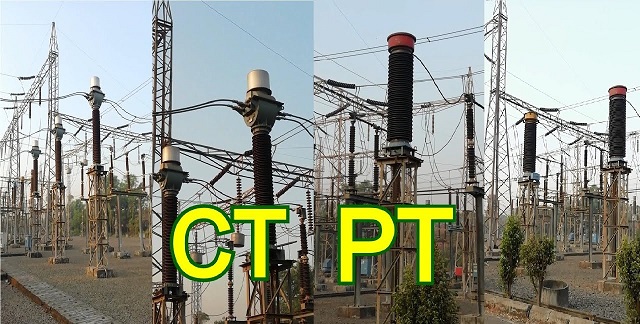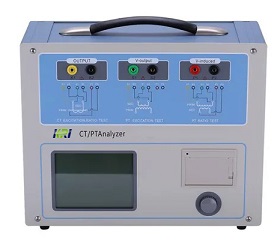Why Can't Potential Transformers(PT) Run Short Circuit and Current Transformers(CT) Can't Run Open Circuit
Why should CT and PT be checked and calibrated regularly?
Current Transformers (CTs) and Potential Transformers (PTs) are critical components in power systems, serving essential roles in measurement and protection. Regular inspection and calibration of CTs and PTs are vital for several reasons.
Firstly, they ensure the accurate operation of protection relays, preventing malfunctions such as false tripping or failure to trip during faults.
Secondly, for metering purposes, the accuracy of CTs and PTs directly affects the fairness of electricity billing between utilities and consumers—any deviation can lead to financial losses or disputes.
Additionally, over time, these transformers may experience issues such as core demagnetization, insulation degradation, or loose wiring connections. If left unchecked, these faults can result in inaccurate measurements or protection failures, potentially causing power outages.
National regulations and industry standards require periodic calibration of CTs and PTs to maintain system reliability and compliance. Therefore, routine inspection and precise calibration of these devices are essential for ensuring safe power system operation, safeguarding economic interests, and preventing equipment failures. This is especially important for power plants, substations, and large electricity consumers
Why must PTs never be short-circuited and CTs never be open-circuited?
We all know that potential transformers(PT) cannot be short-circuited, and current transformers(CT) cannot be open-circuited. Once the potential transformers are short-circuited or the current transformers are open-circuited, the transformers will be damaged or dangerous.
In principle, we all know that both potential transformers and current transformers are transformers, but the parameters of concern are different. So why the same transformer cannot be short-circuited and the other cannot be open-circuited?

During normal operation, the secondary coil of the potential transformer(PT) is equivalent to an open circuit, and the impedance ZL is very large. If the secondary circuit is short-circuited, the impedance ZL rapidly decreases to almost zero. At this time, the secondary circuit will generate a large short-circuit current, which will Damage to secondary equipment or even endanger personal safety. The potential transformer(PT) can be equipped with a fuse on the secondary side to protect itself from being damaged by a short circuit on the secondary side. If possible, fuses should also be installed on the primary side to protect the high-voltage power grid from endangering the safety of the primary system due to the failure of the transformer's high-voltage windings or lead wires.
When the current transformer(CT) is in normal operation, the impedance ZL is very small, which is equivalent to the operation of the secondary coil in a short-circuit state. The magnetomotive force generated by the secondary current demagnetizes the magnetomotive force generated by the primary current, the excitation current is very small, the total magnetic flux in the iron core is very small, and the induced electromotive force of the secondary winding does not exceed several tens of volts. If the secondary side is open, the secondary current is equal to zero, the demagnetization effect disappears, but the ε1 of the primary coil remains unchanged, and the primary current completely becomes the excitation current, causing the magnetic flux Φ in the core to increase sharply, and the core is in a highly saturated state. In addition, the number of turns of the secondary winding is large, and a high voltage (even thousands of volts) will be generated at both ends of the secondary winding, which may not only damage the insulation of the secondary winding, but also seriously endanger personal safety. Therefore, the open circuit of the secondary side of the current transformer is absolutely not allowed.
Both potential transformers(PT) and current transformers(CT) are transformers in principle. Potential transformers(PT) focus on changes in voltage, and current transformers focus on changes in current. So why is the same transformer, the current transformer can not run open circuit, the voltage transformer can not run short circuit?
During normal operation, ε1 and ε2 remain unchanged. The primary side of the potential transformer(PT) is connected in parallel in the circuit, the voltage is relatively high, the current is very small, and the current on the secondary side is also very small and almost zero during normal operation, forming a relative balance with the open circuit infinite impedance in the secondary circuit. When the impedance of the secondary side is rapidly reduced to a short circuit, because ε2 remains unchanged, the secondary current will increase rapidly and the secondary coil will be burned out.
By the same token, during normal operation, ε1 and ε2 remain the same. The primary side of the current transformer is connected in series in the loop, the current is relatively high, and the voltage is very small. During normal operation, the voltage on the secondary side is also very small and almost zero, which forms a balance with the short-circuit infinite small impedance in the secondary loop. When the impedance of the secondary circuit increases rapidly to an open circuit, the secondary current rapidly drops to 0, and the primary current is completely converted into the excitation current, resulting in a rapid increase in the magnetic flux to saturate and burn out the transformer.
So the same transformer, different applications, the results will be different.
Kingrun's CT& PT Analyzer JYH-C


Kingrun Transformer Instrument Co.,Ltd.


More Transformer Testers from Kingrun






